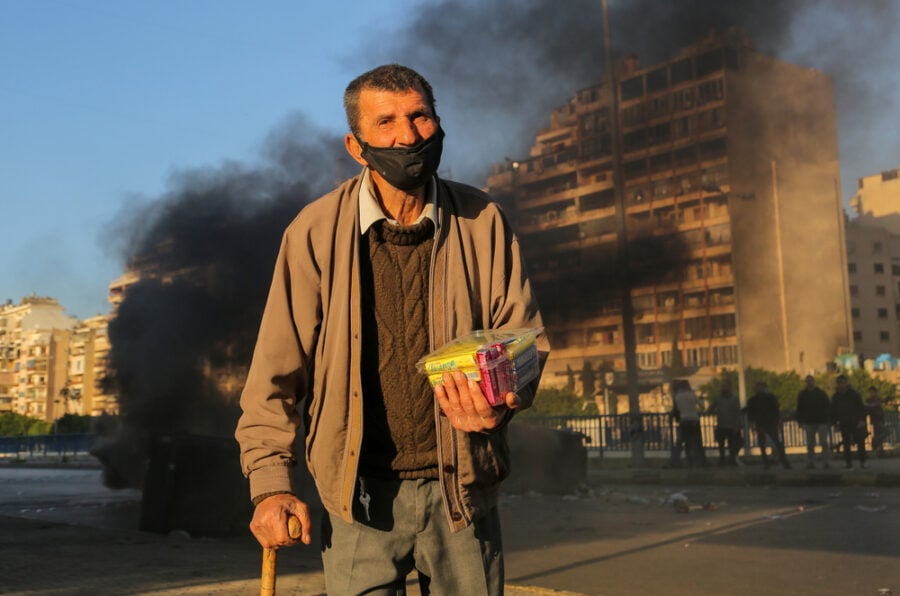In 2017, a senior World Bank official described the situation in Lebanon at the time, when he said, “Lebanon is a punctured ship that is slowly sinking.”
And that’s what took place.
Lebanon plunged into the worst complex economic crisis in the world as a result of deep political differences and politicians giving priority to their interests at the expense of the state and the citizen.
The local currency lost its purchasing power, while inflation recorded unprecedented rates. As for poverty, it now affects two thirds of the Lebanese. It seems that this reality is likely to continue in the absence of a change in this mentality.
The Lebanese had hoped that the parliamentary elections that took place on May 15th would constitute an opportunity to reverse the deteriorating path they have been experiencing for nearly two and a half years, but hopes are not matching up to expectations.
Because, as soon as this entitlement ended, the exchange rate of the Lebanese pound resumed its hysterical decline against the dollar, at a time when prices of foodstuffs, commodities and fuels continued to soar.
In March 2020, Lebanon announced its failure for the first time to pay its obligations towards international Eurobonds, all of which matured at a value of $31 billion.
A few days ago, the exchange rate of the lira witnessed a rapid, unjustified decline, reaching the 38,000 pounds to the dollar, a level it had not reached before. This was accompanied by a significant increase in the prices of other materials and goods, as the price of a can of gasoline reached 600,000 pounds (from 38,000 pounds before the outbreak of the crisis in October 2019), while supermarkets were pricing goods on the basis of 40 thousand pounds.
In addition, bread, which is the main item in the Lebanese food basket, is not readily available due to lack of flour, forcing Lebanese to wait in queues to get one bundle of bread, if they are able to do so.
Deposits are kept in banks that suffer from liquidity and solvency crises, and the Central Bank lost its reserves in foreign currencies as a result of support operations that the Lebanese did not benefit from due to smuggling operations to Syria.
The reserves declined from about 43 billion dollars in 2018 to 11 billion dollars in mid-May 2022. It is expected that additional declines will be recorded due to circulars and statements issued by the Central Bank in an attempt to calm the madness of the currency market, which compels it to intervene in the hope of controlling it amid a complete absence of any integrated economic vision that identifies the necessary treatments to start the economy’s recovery.
Double deficit
In contrast, Lebanon suffers from a large double deficit: a record budget deficit and a record current account deficit. Over the years, the authorities have been relentless in ignoring this double deficit, financing each of them from the money in private banks, that is, practically from the money they borrowed from depositors, without limits, responsibility, until it all ended in a collapse.
And when the flow of deposits became scarce and investors lost any hope or confidence in a promised financial reform, this fragile financing system collapsed, and with it the structure of the banking system and the central bank.
This is a small example of what is happening in Lebanon, a country that was once a haven for Arabs and foreigners’ money and a destination for foreign investments, when economic growth rates exceeded 8 percent.
The World Bank believes that the financial crisis in Lebanon, which is driven by huge debts and the unsustainable way in which they were financed, has caused the GDP to drop by 58.1 percent since 2019 to decline to about $21.8 billion at the end of last year.
Financial and economic recovery plan
Since the outbreak of the October 17, 2019 revolution, the economic situation has slipped at a rapid pace, with all its components collapsing. But this did not prompt the officials to put aside their differences and work on developing an integrated plan that would revive the economy, that is until the last session of the Cabinet, before the government turns into a caretaker government, awaiting the formation of a new government after the elections, when it reached a plan for financial and economic recovery.
Unfortunately, if this plan sees the light of day, it will eliminate the deposits (I set it at $70 billion) that have evaporated without specifying those responsible behind their disappearance. This is in addition to financial losses at the Central Bank of Lebanon.
This came after Lebanon reached an expert-level agreement with the International Monetary Fund, enabling it to obtain a $3 billion loan, provided that a prior basket of reforms is implemented.
It is expected that the current plan, which was hastily approved in the last session, will be a reason for widespread objections that prevent its approval, especially by banks, being similar to the recovery plan that was being discussed by the previous government.
The current plan provides for writing off the banks’ capital, restructuring them, and dissolving those that are not viable. This is what the banks strongly reject and are preparing to start a retaliation to bring down the plan.
Note that the plan excludes the responsibility of the state for creating this financial hole and distributes losses in a hierarchically unusual manner between the Central Bank, banks and depositors, the latter being the weakest link.








